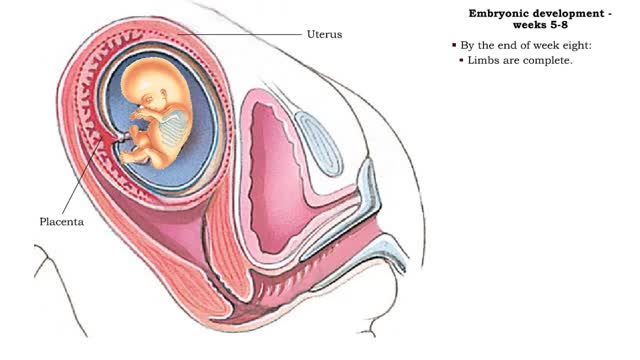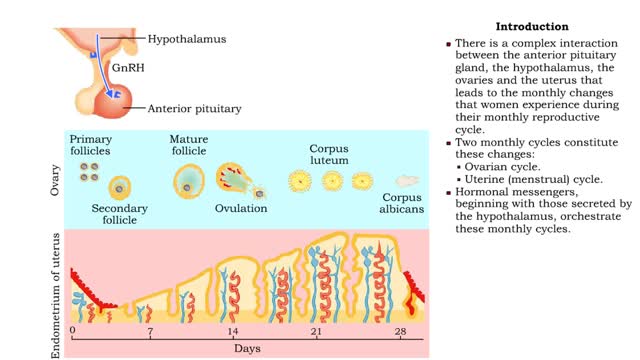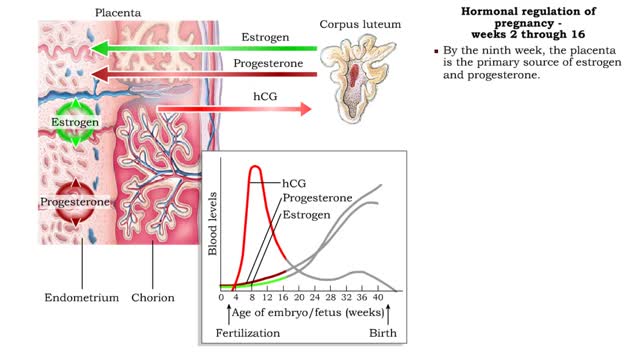Search Results
Results for: 'plant body'
By: HWC, Views: 10701
• Dissociation of the chemical substances in the body fluids can result in the production of free hydrogen ions. • The pH scale is used to measure the concentration of hydrogen ions in solution. • Normal blood pH values vary around 7.4. • When hydrogen ion concentration increases, t...
Embryonic development - Weeks 5 to 8
By: HWC, Views: 10823
• The second month of development is characterized by rapid development of the head and limbs as well as continued organogenesis. • During the fifth and sixth weeks growth of the brain, and therefore head, is rapid. • Hands and feets begin to form. • During week seven, even more deve...
Autonomic Nervous System Animation
By: Administrator, Views: 13912
Parasympathetic Division Works to conserve energy and innervate the digestive system. When activated, it: stimulates the salivary and digestive glands. decreases the metabolic rate. slows the heart rate. reduces blood pressure. promotes the passage of material through the intestines along...
Brain Anatomy Animation (Part 1 of 2)
By: Administrator, Views: 14063
The human brain is the central organ of the human nervous system, and with the spinal cord makes up the central nervous system. The brain consists of the cerebrum, the brainstem and the cerebellum. It controls most of the activities of the body, processing, integrating, and coordinating the infor...
Glucose anabolism reactions: Glycogenolysis and Gluconeogenesis
By: HWC, Views: 10961
• Glucose not needed immediately is stored as glycogen. The process that creates it is glycogenesis. • When ATP is needed for body activities, stored glycogen is broken down by a process called glycogenolysis. • Glucose can be formed through two different anabolic reactions: • Glycog...
By: Administrator, Views: 13706
The precise source of diabetic issues in children is not known. However, aspects like genetics, household history, bad diet plan, etc. are considered as some of the diabetes causing aspects. In many of the cases, adolescent diabetes is a genetic (acquired at birth). diabetes symptoms in children ...
Female Reproductive System - Hormonal regulation (GnRH) الجهاز التناسلي للأنثى - التنظيم الهرموني
By: HWC, Views: 11041
• There is a complex interaction between the anterior pituitary gland, the hypothalamus, the ovaries and the uterus that leads to the monthly changes that women experience during their monthly reproductive cycle. • Two monthly cycles constitute these changes: • Ovarian cycle. • Uter...
Hormonal regulation of pregnancy - weeks 2 through 38
By: HWC, Views: 11042
Weeks 2 through 16 • During the first few months of pregnancy, estrogen and progesterone are secreted primarily by the corpus luteum. • These hormones act to maintain nutritional support for the embryo and fetus. • hCG production increases, peaking at 8 weeks. • hCG triggers the c...
Buffers definition and the role of buffer in the body
By: HWC, Views: 10673
■ Too many H+ break hydrogen bonds and a protein comes apart. ■ Buffers react with excess H+ to protect proteins from breaking down. ■ Buffers consist of weak acid plus anions of that weak acid. This solution contains: • hydrogen ions • weak acid (H2CO3) • anions of we...
Advertisement











